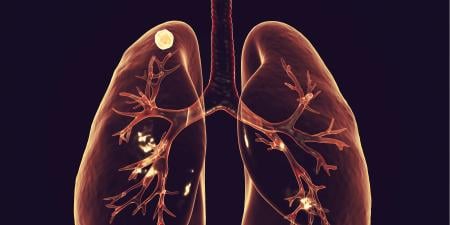The history of health law stretches back more than 200 years, when medical practice first became regulated and matters of medical expertise began to be used in court proceedings, such as forensic psychiatry and pathology [1]. Medical malpractice is, perhaps, the most well-known area of health law to students and clinicians. The English case Slater v. Baker and Stapleton, which is frequently cited as foundational precedent for American malpractice law [2], was decided in 1767 in favor of the patient, who, without proper consent, underwent a failed experimental treatment to mend a fracture [1]. Similarly, literature on health jurisprudence from that era, such as John J. Elwell’s seminal text Medico-Legal Treatise on Malpractice and Medical Evidence: Comprising the Elements of Medical Jurisprudence[3], focused primarily on medical malpractice.
Health law has since evolved, but some physicians’ fears of malpractice litigation still arise upon hearing the word “law” or “lawyer.” In fact, 93 percent of surveyed physicians in high-liability specialties reported practicing “defensive medicine” as a result of their fear of litigation [4]. However, physicians’ fear of malpractice litigation has been shown to be disproportionate to the risk of such litigation in certain states [5, 6]. Does this data suggest general confusion among physicians about health law and its impact on their clinical lives?
This theme issue of the AMA Journal of Ethics was born of my desire to address some physicians’ emotional negativity and confusion about law and to highlight opportunities for collaboration by examining the nature of interactions between law and medicine. This issue presents practical information and thoughtful perspectives on some pressing legal issues and suggests ways in which law can become a useful tool for clinicians.
Two case commentaries respond to the ethical dilemma of whether to employ expedited partner therapy (EPT), which enables clinicians in 46 states [7] to treat their patients’ sexual partner or partners—whom they have not met or examined—for a sexually transmitted infection. In their commentary, Barry DeCoster and Lisa Campo-Engelstein foreground the need to assess the patient’s reliability as a messenger, while Hilary E. Fairbrother analyzes the case in light of core ethical principles. Both commentaries also discuss the legal situation of EPT and conclude that the law in this case does indeed have helpful answers, as long as limitations are acknowledged and addressed.
Three pieces take up the participation of members of the medical profession in legal and policy matters. Joseph S. Kass and Rachel V. Rose discuss ethical issues a physician might consider when faced with an offer to serve as an expert witness when he or she is undecided about whether the content under analysis meets an evidentiary standard. Pablo A. Ormachea, Sasha Davenport, Gabe Haarsma, Anna Jarman, Howard Henderson, and David M. Eagleman present a new neuroscience-based technique for predicting recidivism that they hope will eventually be used in tailoring sentencing. Thomas J. Nasca and Douglas Carlson consider the role of the Accreditation Council for Graduate Medical Education (ACGME) in distributing residency programs and slots.
Although this theme issue of the AMA Journal of Ethics tries to dispel the idea that health law starts and ends with malpractice, it does consider how to minimize malpractice liability. Acknowledging the limited scope of medical students’ knowledge of legal rules and problems, Gregory Dolin and Natalie Ram discuss an innovative, hands-on course offered to both medical and law students that introduces the process of litigating a medical malpractice case. Two other articles speak to minimizing liability. Laurence B. McCullough, Frank A. Chervenak, and John H. Coverdale discuss a stepwise process for ethical decision making that minimizes liability risk in a case in which a patient with psychosis who is in labor comes to the emergency department. In a second contribution, Kass and Rose examinethe evolution of malpractice reform and the emergence of alternative dispute resolution (ADR) programs that can enable disclosure of harm and facilitate restitution.
Privacy law is another key theme of this issue. Mary Majumder and Christi Guerrini identify misbeliefs that privacy provisions of the Health Insurance Portability and Accountability Act (HIPAA) obstruct good clinical care. Nicolle K. Strand examines—and reveals loopholes in—current state protections against surreptitious genomic testing. These two articles offer insights into privacy dilemmas as they relate to biological specimens in the era of genetic research and testing. Abigail English and Julie Lewis unmaska tension between fundamental ethical requirements of protecting patient confidentiality and the need for transparency in billing and insurance communications, which can lead some organizations to forgo payment to protect patients’ confidentiality. They highlight state laws related to insurance communications that would increase privacy protections and thus obviate the need for this practice.
Knowledge is key to encouraging and enabling clinicians to participate in the legal system for the benefit of patients. This theme is developed in this issue’s podcast with Megan Sandel, who highlights ways that medical-legal partnerships can help address some health issues more effectively than medicine alone. In their commentary on a case in which a physician doubts whether she has an obligation to report a patient suspected of not being a legal resident, Jeff Sconyers and Tyler Tate affirm that the current law is in line with the physician’s inclination not to report.
Kelly A. Kyanko, Jun-Chieh James Tsay, Katherine Yun, and Brendan Parent challenge us to think beyond immediate clinical encounters in considering possible repercussions of patients’ limited access to health care. For undocumented immigrants, risks of latent tuberculosis treatment—which can include permanent, lethal liver damage—are uniquely dire, because these patients are not eligible for insurance, and therefore unlikely to be listed for potentially life-saving liver transplants. Christine Khaikin and Lois Uttley examine how limited access to health care services can result from hospital mergers without adequate oversight or input from clinician employees and patients. Finally, in this issue’s health law section, Richard Weinmeyer reviews the lengthy and politicized history of needle exchange programs (NEPs) that prepared the way for their (mostly) legal and funded status following a recent major outbreak of HIV in Indiana.
My hope is for readers to approach this theme issue with curiosity and emerge with a sense of confidence, a trust in their ability to seek counsel from the law and more ably discern its intersections with ethics. Developing the content of this issue has prompted me to appreciate that physicians have obligations not only to follow the law, but also to draw upon it for the good of their patients. Physicians’ engagement with law should not be confined to malpractice reform, but should instead be central to their clinical goals and communications with patients. May this issue be a start for many on that journey.
References
- Annas GJ. Doctors, patients, and lawyers—two centuries of health law. N Engl J Med. 2012;367(5):445-450.
- Sandor AA. The history of professional liability suits in the United States. JAMA. 1957;163(6):459-466.
-
Elwell JJ, ed. A Medico-Legal Treatise on Malpractice and Medical Evidence: Comprising the Elements of Medical Jurisprudence. New York, NY: John S. Voorhis; 1860.
- Studdert DM, Mello MM, Sage WM, et al. Defensive medicine among high-risk specialist physicians in a volatile malpractice environment. JAMA. 2005;293(21):2609-2617.
- Carrier ER, Reschovsky JD, Mello MM, Mayrell RC, Katz D. Physicians’ fears of malpractice lawsuits are not assuaged by tort reforms. Health Aff (Millwood). 2010;29(9):1585-1592.
- Waxman DA, Greenberg MD, Ridgely MS, Kellermann AL, Heaton P. The effect of malpractice reform on emergency department care. N Engl J Med. 2014;371(16):1518-1525.
-
Centers for Disease Control and Prevention. Legal status of expedited partner therapy (EPT). Updated June 4, http://www.cdc.gov/std/ept/legal/. Accessed January 26, 2016.



